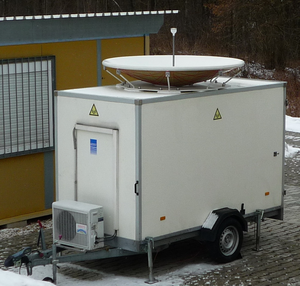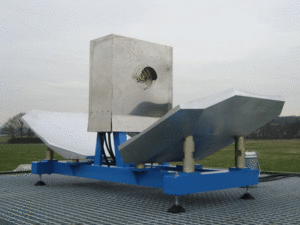Cloud radar
Introduction
Traditionally the focus of radar in meteorology has been on the detection and analysis of precipitation distribution and dynamics. With the emphasis on understanding the role of clouds in the global radiation budget, this focus has expanded to measurements of non-precipitating clouds including their properties and structure. To study the radiative impact of clouds on the climate system, their microphysical properties like particle size distribution, liquid and ice water content, as well as their macrophysical structure must be known.
Millimeter wavelength cloud radars measure profiles of the intensity of particle-backscattered signals and their Doppler shift which can be used to derive information about the particle size and concentration as well as about their motion. Because of their short wavelengths, cloud radars have excellent sensitivity to small cloud droplets and ice crystals. Some radars have the capability for polarimetric measurements which contain additional information about the particle shape and orientation. Compared to optical remote-sensing devices (e.g. ceilometer) cloud radars are able to provide information from inside the clouds even if they are optically very thick. Small antenna sizes yield narrow beamwidths and limited sidelobes which allow measurements with high vertical and temporal resolution. These properties make cloud radars ideal for continuously monitoring the vertical distribution and structure of various cloud types as well as for studying the role of non-precipitating clouds in the climate system.
Cloud radar error characteristics

